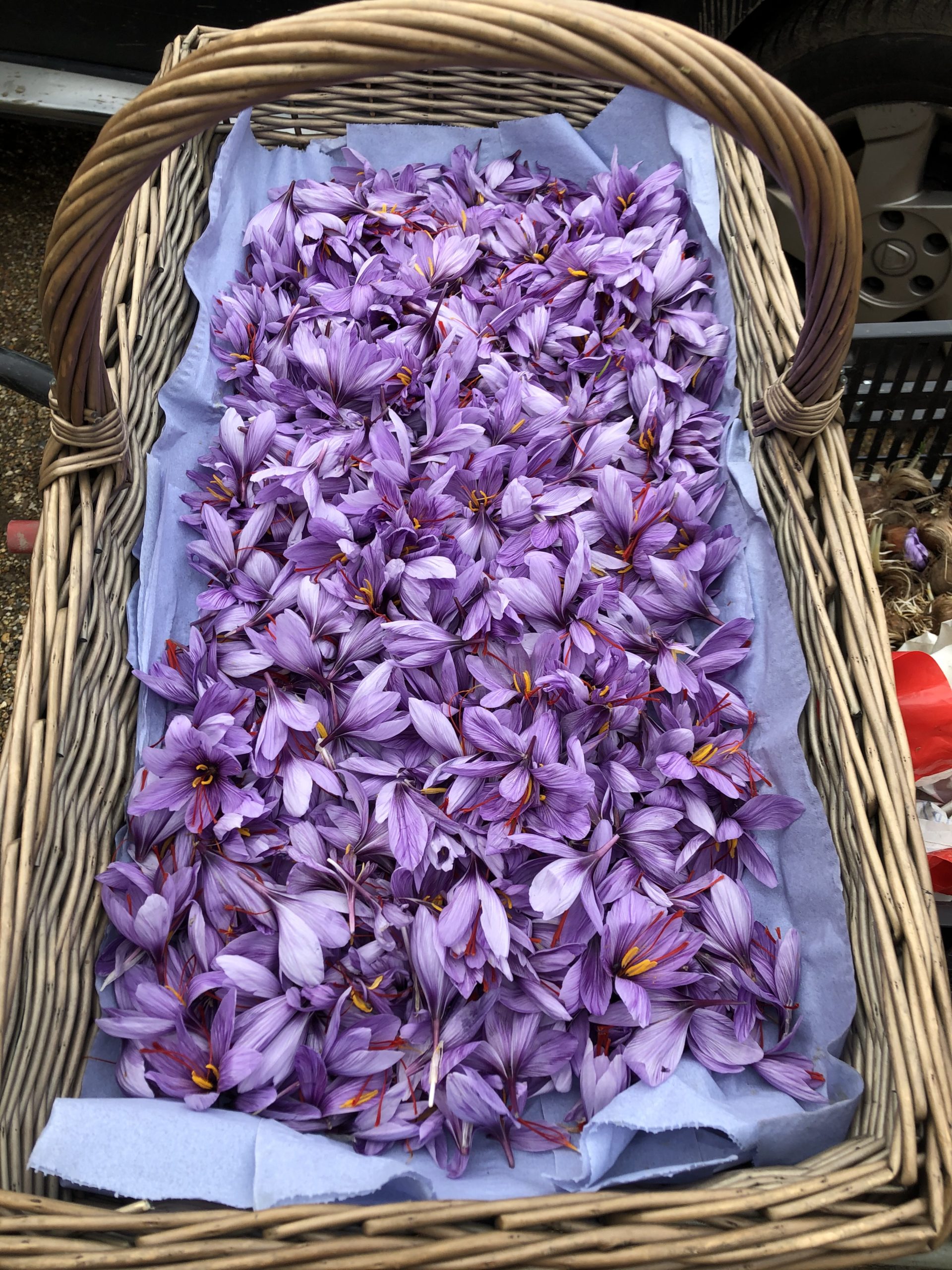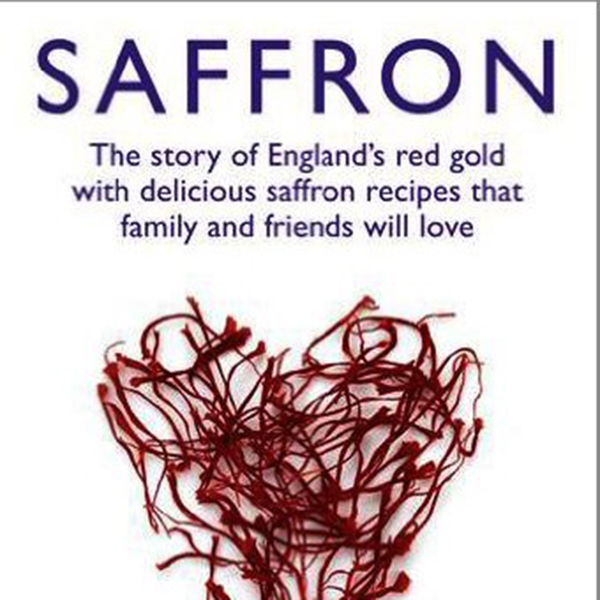The town of Saffron Walden was first called ‘Walden’ and then ‘Chipping Walden’ until around 1500 when the saffron crocus was grown extensively in the area and the saffron trade was at its peak.
Saffron was mentioned as having been first planted in Walden in the time of Edward III (1327 – 1377) and it is likely that the demand for yellow dye from the woollen industry led to the growth in its cultivation. The plant likes a light, rich soil, such as is found around Saffron Walden, which lies on chalk.
The name saffron is derived from the Arabic word Za’faran. The saffron crocus is not a native of this country, it originated in the Middle East, India and China. It belongs to the iris family and flowers in late autumn. The three deep orange stigmas of each flower were removed by hand, dried, and then used as a dye, medicament or food flavouring. Today, saffron is still widely used in cookery for its flavour, colour and aroma.

Because it takes around 4,300 blossoms of saffron to prepare one ounce of the finished product, saffron still remains the most expensive spice in the world – weight for weight sometimes the same price as gold!
In the 17th century, it was popular in this part of Essex to decorate buildings with ‘pargetting’ patterns and designs and the saffron crocus with its three stigmas is still found as a pargetting motif in Saffron Walden.
Over time there was a gradual increase in the amount of imported saffron. This was much cheaper than the English saffron and was frequently adulterated with the stigmas of saff-flower, a type of marigold. By 1726, Littlebury was the only place in the area still growing the plant and by 1790 saffron had virtually disappeared from the immediate neighbourhood.
English Saffron provide Saffron crocus bulbs for the Kitchen Garden of Bridge End Garden, which can be seen in bloom each autumn. We here at the Tourist Information Centre sell a range of saffron-themed goods that can be purchased via our e-shop.
Each year, we have a number of bags of saffron crocus corms for sale. These are normally available to purchase from July onwards. The corms need to be planted as soon as possible after purchase for autumn flowering. Planting instructions come with the corms.
The Saffron Story and Saffron Walden
The story of Saffron Walden’s connection to the saffron crocus (Crocus sativus) and how the flower brought great prosperity to the town can be seen on the video below.
The video has been produced by the Saffron Walden Heritage Development Group and filmed and edited by Paul Bellany of Creative Walden.
Sign up for our News, Offers & Competitions
Categories
Contact Us
Please email us if you have any questions:
tourism@saffronwalden.gov.uk
01799 524002
Tourist Information Centre
1 Market Place, Saffron Walden. CB10 1HR
Opening Hours
Monday to Saturday: 9.30am to 4pm
Bank Holidays: 10.30am to 1pm
(Easter to August only)











